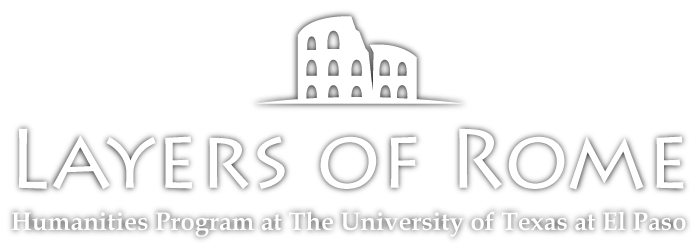The birth and evolution of the Roman Empire is a long and complex story. It gave rise to Europe’s first effective political and social organization, establishing patterns of operation—for good and bad—that still motivate European culture. Its longevity was a major reason for its impact. The remarkable points in its history are imbedded in the social memory of Europe and the Americas, influencing us daily, often without our knowing. This interactive timeline, made up of written accounts, photos, videos and interactive, digital links, provides a framework, to give a shape to the amorphous data points, generalized events and obscure characters of Roman History. Like so much of human history, this timeline begins in the vague legends of heroic time at the foundation story of Romulus and Remus, proceeds through the remembered deeds of Rome’s most noble ancestors to a time when Rome became a discoverable city-state at a key junction along the west coast of Italy. The events listed here highlight the main accomplishments of Rome’s social and political development of the Republic government, which enabled her to expand into the dominant power in Italy and eventually in the whole Mediterranean Basin. And then, at what seemed the apex of her history, as events in the timeline show, Roman democratic organization began to crumble, giving way to a militarized, monarchical system, the Roman Empire. The new super power would expand its vast reach to the northern islands of Britain, far east into Asia, into northern Africa and throughout the Middle East. Unable to ever settle the problem of imperial succession, the system managed to hold the Empire together as a cultural unit for over 500 years. In the process, it nurtured Christianity into the dominant religious institution of Europe and eventually into one of the world’s major religions. This timeline is the outline of Rome’s remarkable story.
